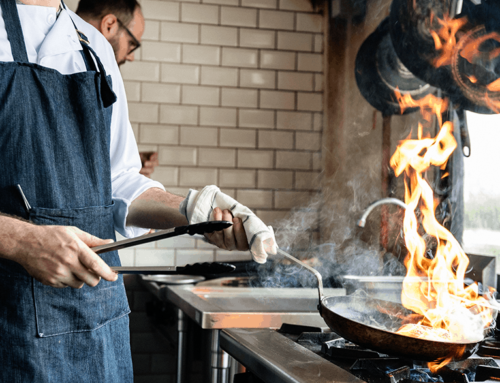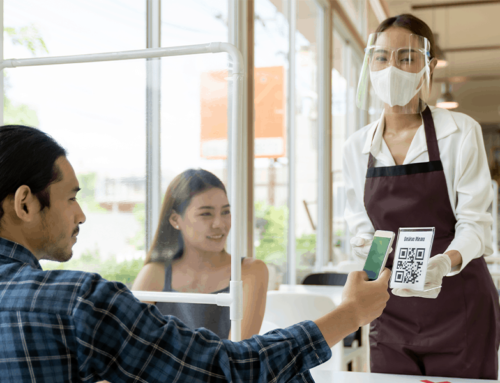Opening a Virtual Restaurant
- What is a virtual restaurant?
- Why are virtual restaurants so appealing?
- What are the benefits of virtual restaurants?
- What should you consider before launching a virtual restaurant?
Virtual restaurants, which Eater calls “ghost kitchens,” are one-part Gordon Ramsay and one-part virtual reality. These businesses produce food in a delivery-only model with no storefronts, no seating, and, compared to traditional brick and mortar restaurants, possibly fewer worries. With one in six of the restaurants operating at the beginning of 2020 now permanently shut down thanks to COVID-19, the virtual restaurant is a bright, innovative idea in an industry that has struggled recently. As we come out of lockdowns, virtual restaurants give business owners a way to respond to the choices consumers have grown to expect while supplementing revenue and leveraging the space and products that you already have.This article will help you understand the virtual restaurant concept and share some tips on how to launch your own virtual foodie adventure.

What is a Virtual Restaurant?
A virtual restaurant lacks a dining room or physical space for diners to gather, instead, focusing on a delivery-only model that emphasizes cleanliness and no-contact delivery as much as great food. These models often use digital apps and third-party delivery services, along with capitalizing on the gig economy for staffing that cuts business overhead. Customers use a mobile or web application to view the menu and place their orders. The app notifies the kitchen and the meal is prepared. Then a food-delivery service such as UberEATS picks up the food and gets it to the customer.
No matter what you call it—ghost kitchen, delivery-only food service, a cloud kitchen, or a virtual food brand—the virtual restaurant has arrived. QSR Magazine calls these businesses, “a decidedly unorthodox model, but one that’s growing in popularity lately.” Euromonitor predicts these businesses will be a $1 trillion global powerhouse by 2030.

Why Are Virtual Restaurants So Appealing?
The global pandemic opened the door to this new trend. However, there were signs well before COVID-19 that illustrated the potential for virtual kitchens:
- In 2015, 10% of Grubhub and Seamless deliveries were flowing from virtual kitchens in New York City
- Since 2014, online ordering and delivery has grown 300% faster than dine-in restaurant traffic
- 59% of restaurant orders from millennials are for takeout or delivery
- Investment bank UBS predicts online food ordering could grow from $35 billion today to $365 billion by 2030
Convenience seekers look to delivery services instead of planning their meals. Aware of this trend, many restaurants teamed up with delivery services like Uber Eats. UBS says, “There could be a scenario where by 2030 most meals currently cooked at home are instead ordered online and delivered from either restaurants or central kitchens.
Note that these predictions came out before COVID-19. Since the pandemic, many restaurants ramped up their delivery services as a way to survive amidst business shutdowns and restrictions on in-house dining. Eater says, “Stores in cities that once did a brisk lunch business saw sales fall off a cliff. To mitigate losses, some restaurants are throwing everything they have at virtual expansion, creating entirely new brands that live online.”

What are the Benefits of Virtual Restaurants?
The chief benefit of a virtual restaurant is the lower overhead costs. But that’s not all.
Most entrepreneurs are aware of the scary statistics. Even before COVID, 60% of new restaurants failed in their first five years. However, under the new virtual model, the assumption of risk that comes with launching a restaurant is much lower. The Balance Small Business says, “there is no better time to start a restaurant than right now—just not your traditional brick-and-mortar restaurant.”
Virtual restaurants don’t have to set up a floor plan in a trendy or highly trafficked area where the rent is high. They don’t have to worry about training waitstaff or health department inspections of their dining room. The overhead is less because they don’t need to create an appealing dine-in space where customers can mingle. These ventures are less capital-intensive to launch and maintain long-term. Under these models, the business owner focuses on one key thing: The food. However, for today’s convenience-hungry consumers, the virtual restaurant delivers more than just a great meal.

What Should You Consider Before Launching a Virtual Restaurant?
We spoke with Lisa Matson, co-owner of Sweet Mama’s Restaurant, who has launched more than a dozen virtual restaurants in and around Orlando. She answered some of the most commonly asked questions about the virtual restaurant model.
Question: How do I pick my virtual restaurant location?
Answer: While you won’t need a dining area, you will need a fully functioning and efficient kitchen. We recommend looking for a space that is close to your target market.
Question: How do I calculate delivery expenses for my virtual delivery service?
Answer: Factor in static expenses such as rent, up front equipment costs, storage, ingredients, and staffing. If you’re using a third-party delivery service, or a software-as-a-service app for online ordering, calculate those fees as well. These businesses will usually take a cut of your sale, which can run as high as 30%. This will affect your food markups and subsequent margins.
Question: Can I increase my ROI so that my opening is more profitable early in the business?
Answer: Every situation is different, however, the allure of the virtual model for restauranteurs is that the ROI is higher earlier than traditional dining in. To increase your ROI, though, you have to first diligently consider how you’re tracking returns and what metrics matter to your business. You could perhaps diversify your menu across multiple types of cuisines or change your operating hours to increase return. Understanding your target audience is crucial, along with the competition. Can your business fill a niche in the region you’re serving?
Question: How should I market my virtual restaurant?
Answer: The benefit of the virtual restaurant is that it frees you up to focus on more efficient kitchen workflows and the best food you can possibly create. There are companies like Insight Hospitality Group that specialize in restaurant marketing and can help you use social media and other lower-cost channels to build your business. While you’ll use many of the same marketing techniques your competitors do, like online reviews and pay per click, having a professional, experienced team on your side will avoid costly mistakes and give you the strategic advantage your fledgling business needs.
Insight Marketing Group works with hospitality brands to improve their business. Let us help you create a foolproof marketing plan for your business success. Call on us today.


